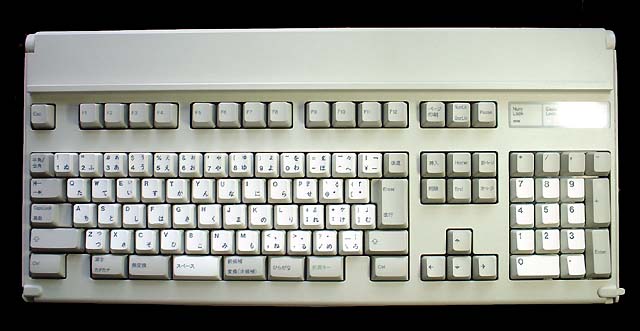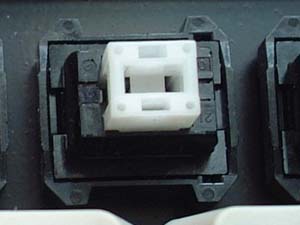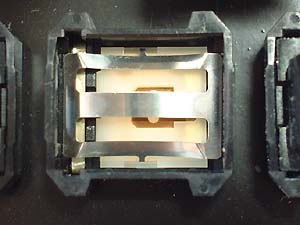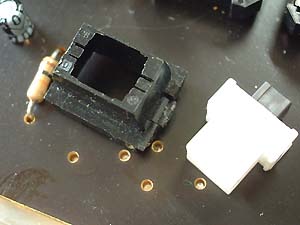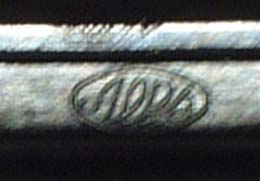|
PS/55
5545-T Keyboard
( PS/2 8573 P7x Keyboard JP
Layout )
IBM P/N 65F0045
FRU P/N 65F0063
PS/55 Japanese 002 layout
ALPS made Plate Spring Switches
Proprietary Plug made by Hirose
Manufactured July 1990
Made in Japan
|
Yipee! I DID disassemble P7x keyboard !
This keyboard is an associated keyboard of PS/55 5545-T, a luggable
desktop PC introduced to Japanese market in May 1990 from IBM
Japan. Basically this one is same with PS/2 8573 P70/75
keyboard except so-called Japanese 002 key layout. Inner
construction, key switches and proprietary cable are all same with
P7x keyboard.
Related Links for IBM PS/2 8573 P70 and P75
P70
Project By Dr. Magic hand, Jim Shorney . Top
page; Just
another freakin' Web page.
8573
Common device By Emperor of Microchannel, Louise Ohrland.
Top page; Ardent
Tool
P70
Keyboard P/N 23F3229 ( written in Japanese )
Let's open the keyboard.
Locking latches locate blue circles in Fig
1 below. You have to release those latches first using a thin
screw driver ( I recommend you making your own tool using such as
bamboo sticks ).
Latches in four red circles are inserted into an aluminum bar which is
screwed on the PCB.
|
Fig 1 ; Location of latches |
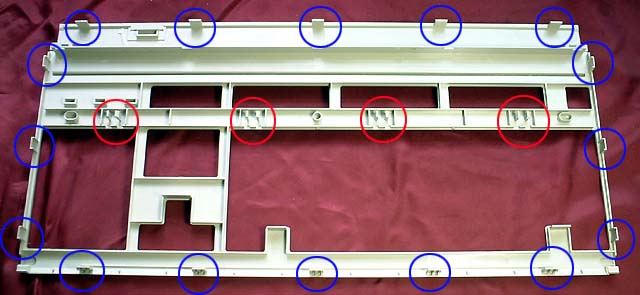 |
|
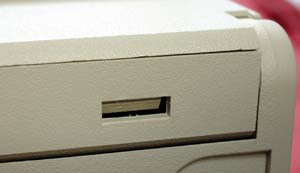
|
Fig 2
First, unlock 5 latches at the rear end.
Once you can release a latch, then insert thin wooden plate or a
guitar pick to keep upper and lower case separated. Without those
separators, upper and lower housing will be easily connected tight
again.
|
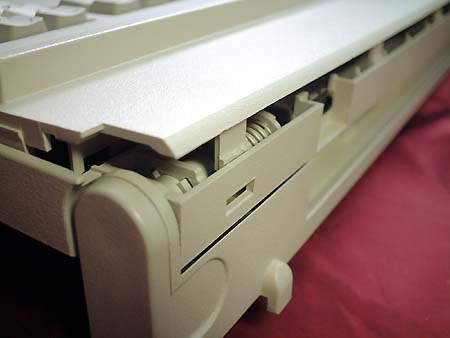 |
Fig 3
After ever latches are unlocked. The
left pcture was taken after latches at the aluminum
angle bar were all removed. |
Once you release 5 latches
at the rear end, next step is to release latches connecting
upper case to an aluminum angle bar on the PCB . Confirm location of
latches with red circle in the Fig1 again..
|
|
Fig 4; Let's confirm construction of
aluminum bar before release latches. |
|
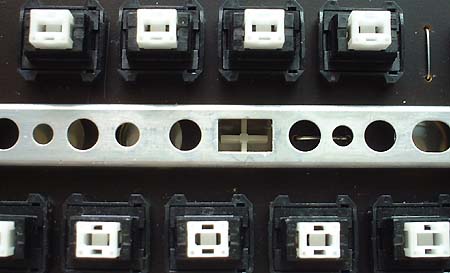
|
|
An Aluminum angle locates between upper
numeric keys and Function keys on the PCB.
4 latches inside the upper housing ( top cover ) go down into
square holes on the bar and connect the upper housing tight
onto the PCB and lower housing.
|
| Fig 5 |
Fig 6 |
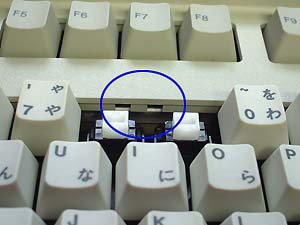 |
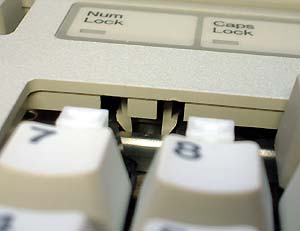 |
|
Latches locate, between [2]
and[3]
、[7] and [8]、
[BS] and then between [*]
and [ /] in case of P7x US layout models.
Go figure by yourself in case of French or German layout
models.
For easy operation, you'd better to pull off whole numeric keys.
Latches look like in picture upper right . Use a thin screw driver
to release those latches.
|
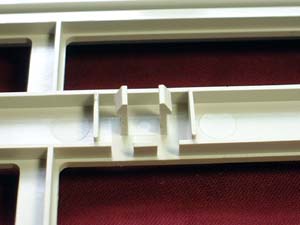 |
Fig 7
latches look like picture left and upper right.
Push each studs inward .
Be careful not to break latches. |
|
Once you can unlock latches which
connect upper housing to the aluminum bar, it's not that difficult to
release other latches around the housing.
|
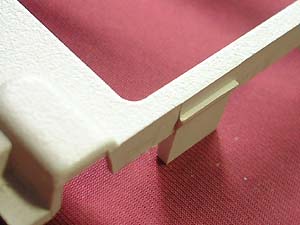 |
Fig 8
There are 3 latches at the both side., 6 tottal.
Frame of lower housing is really thin
and it may be easily to break and get cracked if you push in a screw
driver and then push out lower frame too strong.
You'd better push upper in housing inward by your finger and then use
screw driver as auxiliary tool..
|
| In order to release lock levers at the
front end, first release a lock lever at the corner ( any of left
or right ) then grab rear end of upper housing and pull upward slightly
and then pushing lock lever area of front edge one
by one. You may also use a thin screw driver to release lock levers.
Fig 9; Open sesami. |
 |
|
| Fig 10 Under the PCB, there is an
aluminum sheet ( EMI shield sheet ). |
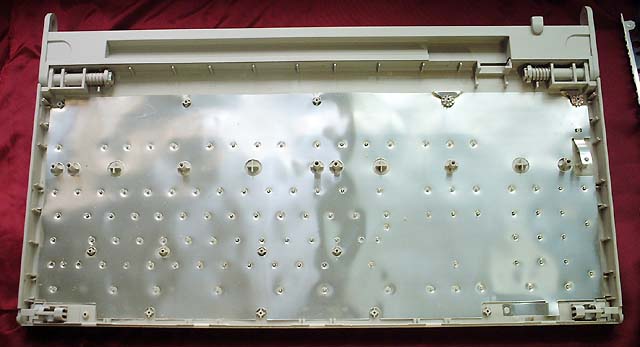 |
|
|
| Fig 11; Bottom view of a main PCB |
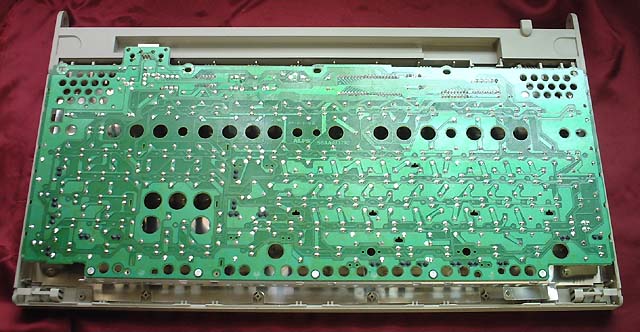 |
|
| Connector Pin-out ( PCB ) |
|
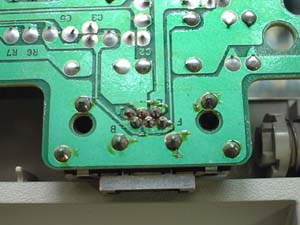
|
Viewing from solder side;
Each soldering land is assigned like following;
NC GND
+5V
O
O O
O
O O
Data
Clock NC
For cable connection of a proprietary plug, see HERE
|
 |
Etching of ALPS logo on a PCB.
As the logo shows, P7x keyboards were actually made by IBM Japan. |
Do you want to see more details?
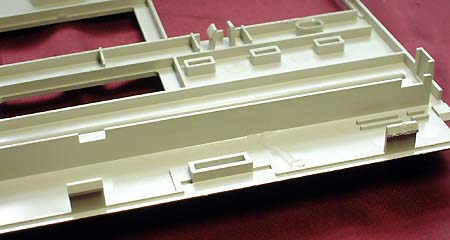 |
Lock levers at the rear ( upper ) end .
So many scratches around the lever. I really hustled with these levers
before I found existence of locking levers going down trough aluminum bar. |
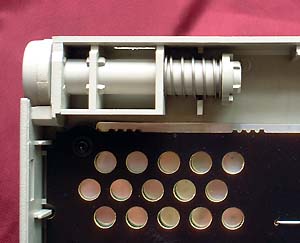
|
Tilting lever and its' spring. |
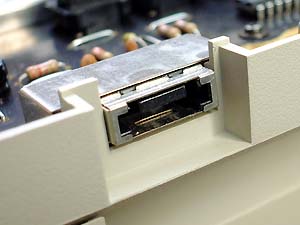
|
Cable connector
Connector and plug are both made by HIROSE。
Not compatible with those of Model M nor 5576 Japanese keboard.
|
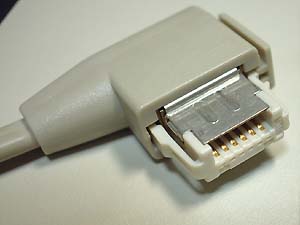
|
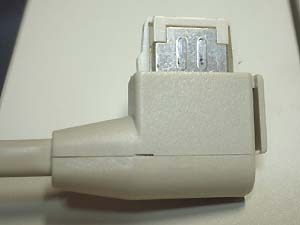
|
|
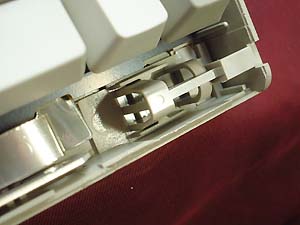
|
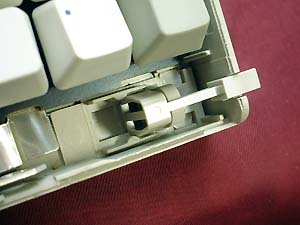
|
|
Lock levers which keeps the keyboard as an front
cover of P7x PC system
|
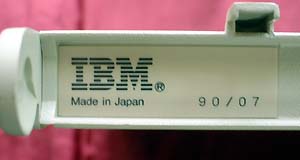 |
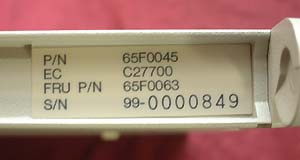 |
|
Mine is for IBM PS/55 5545-T thus
both P/N and FRU P/N are different from those of P7x
|
 |
Silver logo on a gray background.
Can you identify "5545T"?
"T" means 386DX20.
IBM Japan didn't make 486 version equivalent to P73. If they
made it, model number might be 5545Y, I suppose. |
|
Key
switches
US patent 4613737
Basic patent 3899648
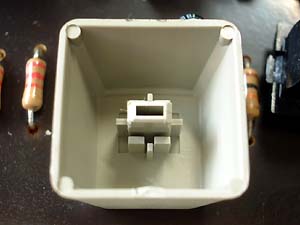 |
Key cap is not two
piece type. |
|
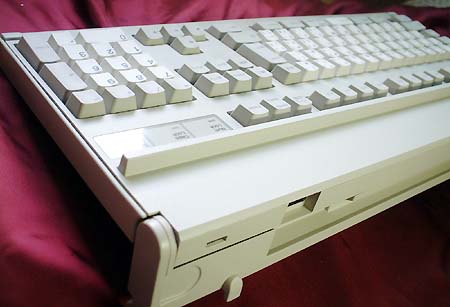
|
|
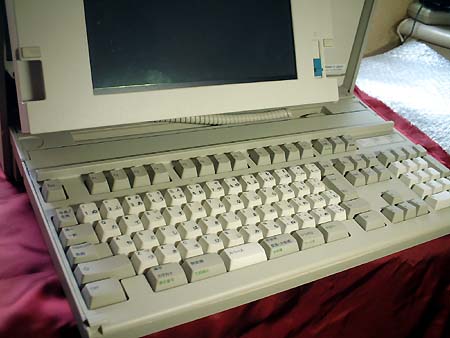
|
|
IBM PS/55 5545 T0B |
|
|
by Sandy. 2004.08.22
English script; 2005.08,21
Minor modification, 2010.02.12
Last modification ; 2013 02.08
|
